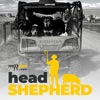
Genetic selection for lower methane in ruminants with Dr Suzanne Rowe
Head Shepherd
English - January 08, 2023 18:00 - 28 minutes - 19.7 MBBusiness sheep genetics farming breeding wool beef cattle technology agriculture bull Homepage Download Google Podcasts Overcast Castro Pocket Casts RSS feed
This week we have a fantastic podcast for you discussing a very hot topic, Methane emissions in ruminants.
We have Dr Suzanne Rowe, Senior Scientist at AgResearch talking about the history of recording methane in sheep, what the industry is currently doing towards reducing methane emissions and where the future of methane in sheep is heading.
Dr Rowe was born and raised in the UK, studied Agriculture and has a PhD in Quantitative Genetics. She then moved to NZ "..where we've got the great facilities and big herds." Suzanne has been working, for almost the past decade, on breeding sheep with low methane outputs.
"The program was started in 2007 by a man called John McEwan, I'm sure many of your listeners would have heard of John. He set out to understand whether methane could be measured and whether it was heritable."
John started with 1,000 animals from CPT flocks, so his findings would be applicable in the industry immediately. "It took him around 4 years to get them all through the Portable Accumulation Chamber (PAC)." The PAC is a chamber which uses a gas analyser measuring device to record gas outputs from sheep.
Back then it took two days to measure one animal. Every 6 minutes a sample would be taken from a PAC, so it did give a very detailed result.
"From there what John did was select high and low methane selection lines and go on to breed these sheep for generations, to see if methane was passed on."
And was it?
"We're here today because it was. It's heritable."
"We went back and looked at those 6 minutes measures over the 48 hour time periods and we looked at each [...] measure and we worked out which of the ones were most predictive." This research and investigation work, evolved since the initial detailed studies, means now just a half an hour 'stint' is needed inside a chamber.
There are currently PACs in Ireland, units in Norway, one off to Scotland, France and Australia so the world is really starting to ramp up methane measurements in livestock.
AgResearch are currently trying to find out the connection between the gut microbes and methane emissions. "The microbiome that sits in the gut, is a property of its' host." Says Dr Rowe. "I don't think thats some maternal transfer, I think that's from the genetics of the animal"
"There are different ways to ferment feed, it seems that the low methane sheep have picked a different way to ferment the feed"
Suzanne briefly talks about the future of measuring methane in sheep. Recently they have been looking into taking and processing rumen samples and comparing them with PAC results. This could allow for more rumen samples to be taken in difficult locations where a trailer can't reach, or even with larger species such as cattle and deer.
However, it's not currently as easy as it may seem. The feed intake has to be very specific and precise prior to taking rumen samples because, as Suzanne explains, "We just don't have the va
We are launching OptiEwe, a one-on-one consulting service for commercial sheep farmers, and want your input. Please take this quick survey to share your preferences on focus groups:
CLICK HERE
Head Shepherd is brought to you by neXtgen Agri International Limited
Thanks to our sponsors at MSD Animal Health and Allflex, and Heiniger Australia and New Zealand. Please consider them when making product choices, as they are instrumental in enabling us to bring you this podcast each week.
Check out Heiniger's product range HERE
Check out the MSD range HERE
Check out Allflex products HERE